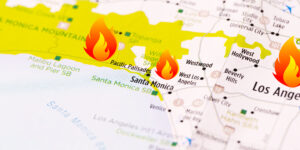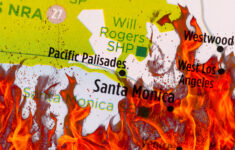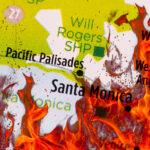Ten million more people will be living on the already-crowded U.S. coast by 2020 if current population trends continue.
The coastal population will increase from 123 million to nearly 134 million people by then, meaning more people will be at increased risk from extreme coastal storms like Sandy and Isaac, according to a report from the National Oceanic and Atmospheric Administration (NOAA).
The report, which analyzed data from the 2010 census, says that 39 percent of the U.S. population is concentrated in counties directly on the shoreline, which is less than 10 percent of the total U.S. land area excluding Alaska. Also 52 percent of the total population lives in counties that drain to coastal watersheds, less than 20 percent of U.S. land area, excluding Alaska.
The National Coastal Population Report: Populations Trends from 1970 to 2020, issued in partnership with the U.S. Census Bureau, updates a 2004 report that projected coastal population trends from 1980 to 2008.
“People who live near the shore, and managers of these coastal communities, should be aware of how this population growth may affect their coastal areas over time,” said Holly Bamford, Ph.D., assistant NOAA administrator for the National Ocean Service. “As more people move to the coast, county managers will see a dual challenge of protecting a growing population from coastal hazards, as well as protecting coastal ecosystems from a growing population.”
This report offers two perspectives on population growth along the U.S. coast–the traditional perspective that looks at status and trends throughout counties that drain to coastal watersheds, called Coastal Watershed Counties, and a newer focus that focuses only on those counties that directly border the coast, including the Great Lakes, according to James Fitzsimmons, assistant chief of the Census Bureau’s population division.
Coastal population statistics in the overall total of 769 Coastal Watershed Counties provide context for coastal water quality and coastal ecosystem health related issues, and data from the 452 of those counties that lie directly on the shoreline, called Coastal Shoreline Counties, can be used to talk about coastal resilience, coastal hazards, and other ocean-resource dependent issues.
“Whether you’re talking about watershed counties or shoreline counties, the coast is substantially more crowded than the U.S. as a whole,” said report editor Kristen Crossett of NOAA’s National Ocean Service.
Crossett said population density in shoreline counties is more than six times greater than the corresponding inland counties and the projected growth in coastal areas will increase population density at a faster rate than the country as a whole.
The report also found that from 1970 to 2010, Coastal Shoreline Counties population increased by 39 percent, and Coastal Watershed Counties population increased by 45 percent.
The report is available on NOAA’s State of the Coast website.





















 California Wildfires Could Spark Insurance Moratoriums, Other Challenges
California Wildfires Could Spark Insurance Moratoriums, Other Challenges  Mercury General Wildfire Losses Will Hit Reinsurance Cover. One Event?
Mercury General Wildfire Losses Will Hit Reinsurance Cover. One Event?  Many Reasons Behind Certain Homes Left Standing After Wildfires
Many Reasons Behind Certain Homes Left Standing After Wildfires  Mercury General Gives Reinsurance Update: One or Two Events Still TBD
Mercury General Gives Reinsurance Update: One or Two Events Still TBD 